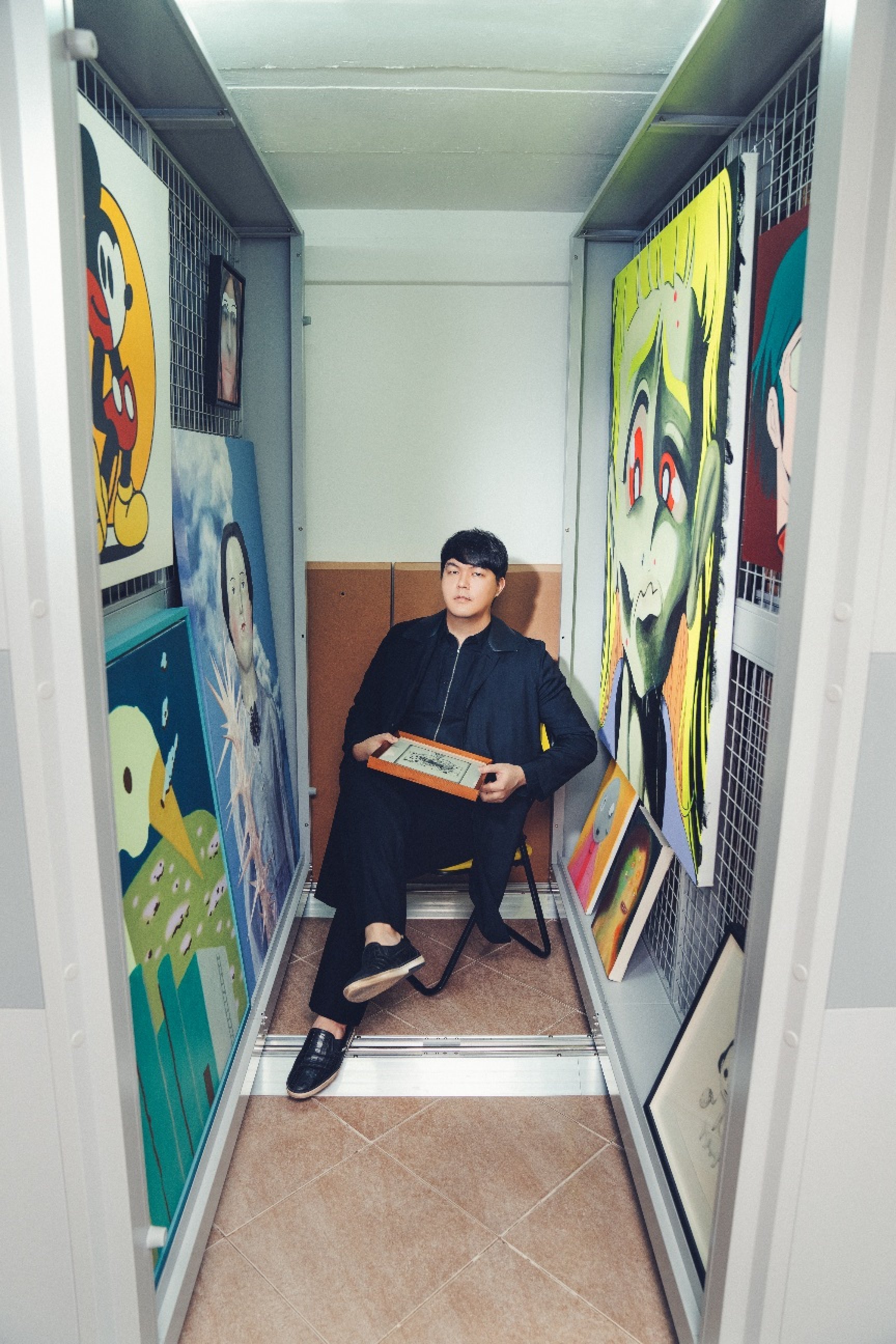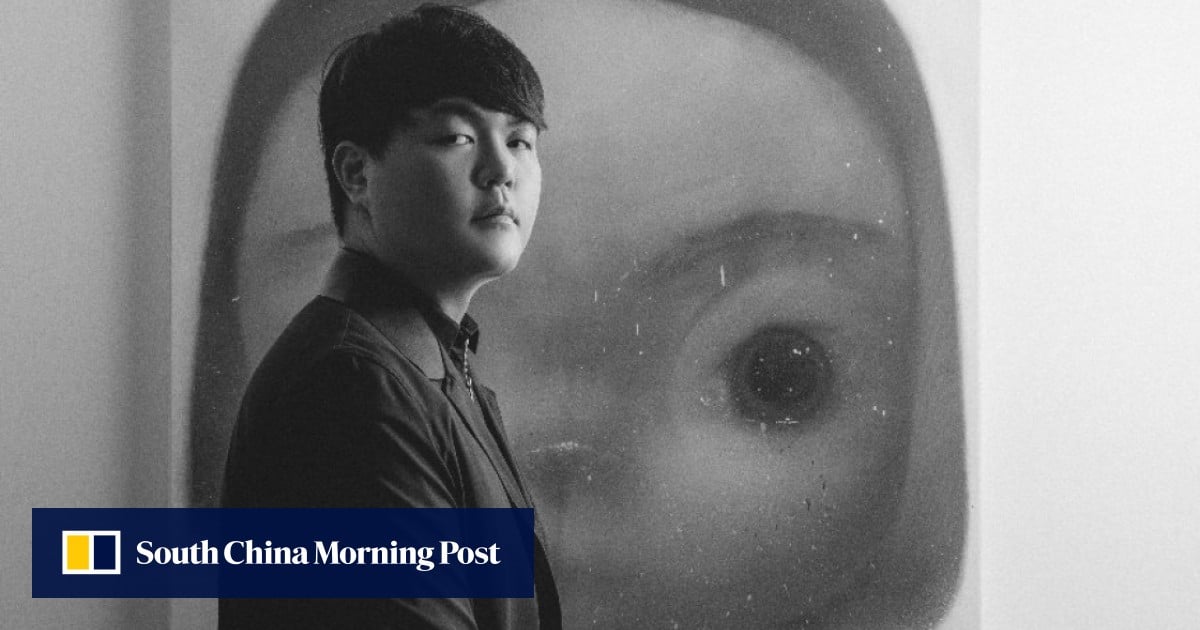These whimsical, grotesque, and downright bizarre sculptures and paintings are part of the collection of nearly 300 artworks amassed by 33-year-old Noh Jae-myung over the past 15 years.
Noh’s private art storage, housing a treasure trove, has turned into an unofficial gathering spot frequented by gallerists, museum patrons, art professionals and fellow collectors from around the globe, who journey to Korea to witness its burgeoning cultural scene.
The vast majority of pieces in his collection are by emerging contemporary artists – Richard Kennedy, Marc Padeu, Choi Ji-won, Rebecca Ackroyd and Megan Rooney, to name but a few – who have caught his attention during visits to galleries and art fairs in Miami, Basel, Hong Kong, Tokyo and Seoul.
How this ink artist learned to be bold and break the rules
How this ink artist learned to be bold and break the rules
In fact, in his trove, it is rare to encounter blue-chip names commonly sought after by long-time art enthusiasts in Korea.
In his eyes, it is crucial to discover rising artists whose works may lack the technical finesse of their more seasoned counterparts, yet still have a solid, tangible presence when displayed in exhibitions.
As a young collector, he was intrigued to come across contemporaries with different life experiences from his own. Many pieces in his vault are by LGBTQ and minority artists, offering him a window into their worlds and enhancing his understanding of others.
“While it’s certainly great to admire the works of established masters, many of them feel distant to me, like they belong in a museum,” he said.

“Seeing young contemporary artists from such diverse backgrounds, on the other hand, actually made me curious about their lives [that fuelled their creative pursuits]. I believe art has helped me become a more empathetic person.”
Noh started collecting art during his high school years in the United States, when he, alongside his friends, dove into the art world through American artist Kaws’ limited-edition art toys. By saving up his allowance, he gradually expanded his trove of relatively affordable editions and prints.
In his senior year in university, he started buying original works.
“I’ve always believed that if I simply followed in the footsteps of someone else, I would only become a lesser version of them, at best. So, I decided to do things my own way,” he said. “I spent a lot of time attending exhibitions and studying artworks – even more than I did for my major.”
He found himself drawn to pieces that appeared utterly bizarre and disorderly, yet “uniquely fun” – a stark contrast to his own disciplined personality.
The Korean art market has experienced an unprecedented boom since the Covid-19 pandemic, with art sales surpassing 1 trillion won (US$718 million) for the first time in 2022.
Despite the current economic slowdown, the country’s art scene, fuelled by a new wave of young collectors like Noh, is garnering increasing attention from abroad.

This growing cohort of collectors, social media savvy and well-travelled, reach out to galleries without relying on third-party advisers or dealers. Unlike their predecessors, they are more transparent about sharing their collecting journey with each other, often city-hopping and attending fairs together.
Noh cautions prospective collectors against viewing art pieces solely in terms of their monetary worth, as it could fuel unhealthy market speculation in the long run.
“Artworks can fluctuate in value or even lose it altogether. If one becomes too fixated on numbers, it’s no different from stocks,” he said.
“Rather than making decisions based on hearsay or thinking about selling even before acquiring them, I hope they prioritise experiencing as many well-curated exhibitions as possible and developing an eye for art.”

Noh sees that the recent influx of international blue-chip and emerging galleries into Seoul has triggered seismic shifts in the domestic collecting scene.
“With global players entering the Korean scene, local collectors now have more diverse options to explore quality pieces and programmes. More importantly, their presence has encouraged domestic audiences to broaden their horizons and discover unfamiliar artists.”
In the art world, it is not uncommon for collectors to become dealers or gallerists after years of cultivating relationships with industry professionals, but organising an entire art fair is a different challenge altogether.
Yet, that is precisely what Noh is undertaking this year.
From April 18 to 21, the inaugural edition of Art OnO, which stands for “One and Only”, will take place at the Seoul Trade Exhibition and Convention, or Setec, in southern Seoul.
Photo trove offers window on life in China’s wartime capital Chongqing
Photo trove offers window on life in China’s wartime capital Chongqing
Its scale is ambitious for the first iteration of an independent fair, bringing together nearly 40 galleries from 15 countries, with more than half from outside Korea.
The roster is notably diverse, featuring blue-chip dealers like Esther Schipper and Galerie Chantal Crousel alongside smaller, fast-growing exhibitors such as Chicago-based Mariane Ibrahim Gallery and Seoul-based ThisWeekendRoom and P21.
And several international dealers are making their first forays into the country through the event, including Nicolas Krupp from Basel and Gathering from London.
But does Seoul really need another art fair? There were 71 mega and boutique fairs hosted across the country in 2022 alone, according to the Korea Art Market 2023 report.
I want to see all 40 exhibitors, regardless of their size, showing off their unusual and unique sides next to one another
Noh believes there is still an untapped niche, even within this seemingly saturated market.
Having attended a dozen such events worldwide as a collector, he felt that “fair fatigue” was real.
“When I visit art fairs, I often encounter the same participating galleries in different cities. The issue arises when both the galleries and the artists they showcase in their booths are nearly identical. It’s just more of the same, regardless of where I am,” he said.

“It’s risky for blue-chip dealers to promote emerging and experimental pieces, especially at mega shows, where all the other influential galleries are presenting their usual six-figure star artists. And smaller galleries willing to do something different often find themselves priced out of these events, due to high booth fees and operational expenses.”
Noh wanted to see an alternative platform where exhibitors could take risks and bring out something genuinely new and offbeat with less emphasis on saleability. That is when he decided to launch his own.
To make participation more accessible for rising galleries with fresh, quality programmes, booth fees at Art OnO are around 40 per cent lower than those of typical fairs in Korea. Meanwhile, big-name dealers have been encouraged to showcase new names in their roster that they may not have been able to highlight in other events, rather than focusing on their usual art fair darlings.
And unlike most other fairs – including Frieze Seoul – which segregate established and young galleries into separate sectors, Art OnO embraces a “mixing it all up” approach.
Black-and-white photography’s ‘enduring power’ in Hong Kong show
Black-and-white photography’s ‘enduring power’ in Hong Kong show
“I want to see all 40 exhibitors, regardless of their size, showing off their unusual and unique sides next to one another. When galleries with strong identities are mixed together through the space, visitors can choose those that suit their taste the best,” Noh said.
Moving forward, Noh envisions his fair as a bridge connecting various parties: between galleries, between for-profit galleries and non-profit institutions, and among private collectors. This vision is reflected in the composition of the event’s committees as well: collectors, institutions, selection and OnO.
Particularly noteworthy is the Collectors Committee, as it brings to light the perspective and voice of collectors in shaping the fair. Additionally, the OnO Committee consists of members below the age of 40 to better reflect the trends among the rising group of young art enthusiasts.
“I hope that through Art OnO, people can experience something new and realise that there are many more ways to enjoy art,” Noh said.
